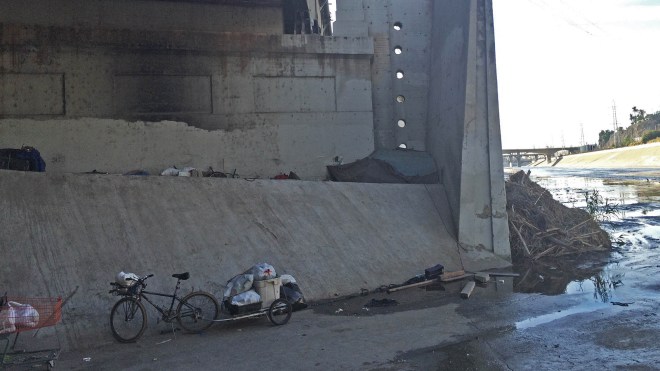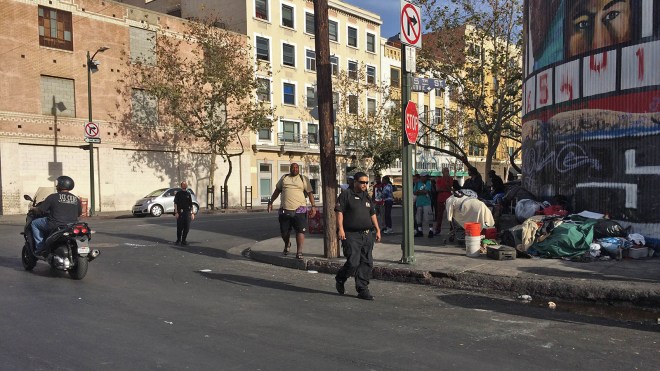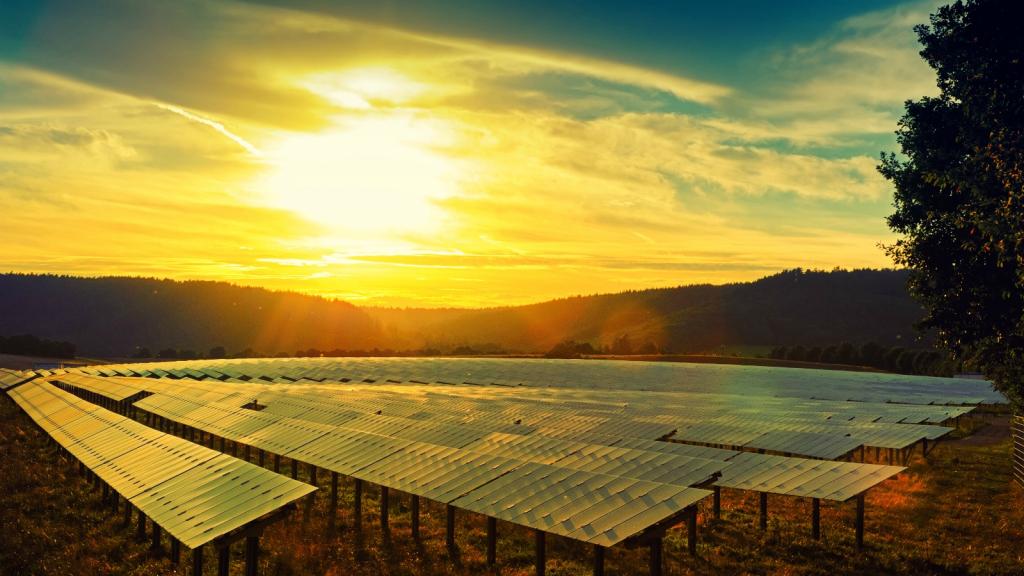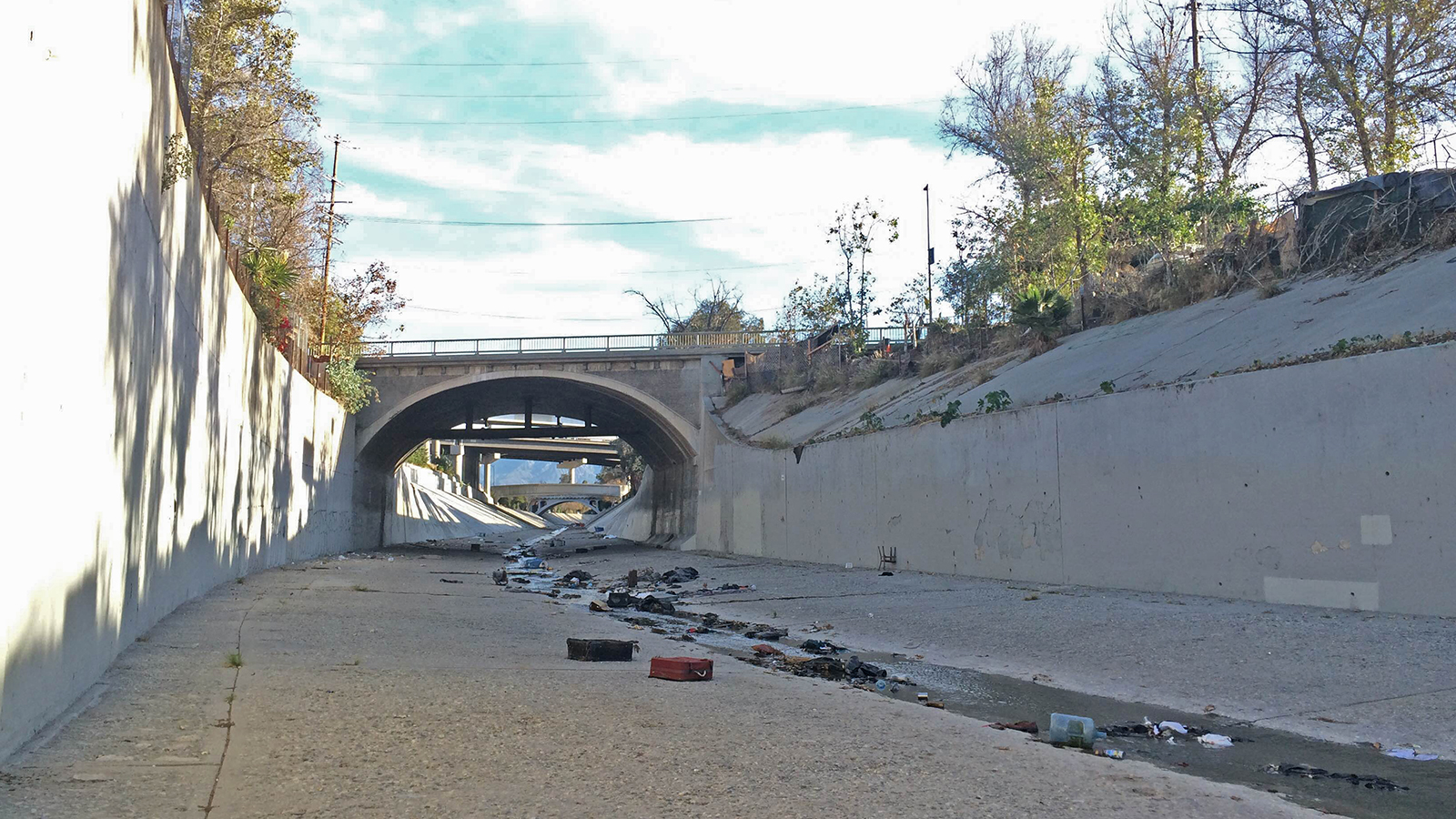When I returned to Los Angeles this summer after an absence of six years, one big change was hard to miss: the spread of homeless encampments under freeway bridges and on the banks of the Los Angeles River. Some are small, just a few people with sleeping bags or blankets and a piece of luggage or two. Other encampments are massive: Aside from makeshift and proper tents, there are accommodations made from a combination of cardboard, heavy tarp, and other fabrics, as well as plywood, plastic, and corrugated metal sheets. Some even have chain-link fencing with gates and locks.
In and around the L.A. River, people have essentially created small neighborhoods that, in any other country, would be called shanties. But this is Los Angeles — the third wealthiest city in the world. So we’ll stick with encampments, which is what everyone seems to call them here. Of course, the word many of the residents use is simply “home.”
If El Niño rains swamp the city, as climatologists forecast, it could take a devastating toll on parts of the West Coast. If a series of storms hits Southern California, Los Angeles may face big power outages and flooding. Six city agencies are tasked with preparing residents for El Niño. Meanwhile, the Los Angeles Homeless Services Authority (LAHSA), along with five other agencies, has formed an El Niño Homeless Encampments Task Force, which is encouraging encampment residents to get out before the storms hit.
LAHSA and the Sherriff’s Department conducted an aerial survey of the L.A. River and its tributaries two months ago and found 200 encampments — which they refer to as “hot spots.” But because so many people live out of aerial view (under a bridge that crosses the river, for example), the task force estimates the total number of encampments at more like 400, with “at least 700-800” people living in them (those italics suggest the number is much higher).

An encampment at the end of a ramp that leads to the Los Angeles River in Lincoln Heights, Calif. Aura Bogado
Just last week, Mayor Eric Garcetti pledged more than $12 million from the city’s general fund toward short-term efforts to get homeless people off the streets in time for El Niño. The bulk of the money will go to subsidize short-term rent, and close to $2 million is allocated for additional shelter beds. This is in addition to the winter shelter program, which is adding a minimum of 1,600 additional shelter beds this season and opening as many as 10 additional shelters.
The mayor’s announcement is part of a broader $100 million plan to address homelessness in Los Angeles. According to the latest count, the city’s homeless population is about 26,000, and about 18,000 of them are without shelter. Some 44,000 homeless people live in the county, and about 31,000 of the county’s homeless are without shelter (the city and county divides are fuzzy, and you can easily step from one to the other without even noticing it). Black people are overrepresented when it comes to being homeless: Less than 10 percent of Los Angeles County’s overall population is black, but 39 percent of homeless people here are black. Even with additional short-term measures, there simply aren’t enough roofs for the people who need them ahead of El Niño.
“We have a model that works and we’re finally scaling it up,” Garcetti told reporters. But not everyone’s convinced the model is a good one.
“To continue dedicating tens of millions of dollars to strategies that by design are short-term and emergency to an entrenched, long-term epidemic is a model that has been broken for decades,” responds Eric Ares, a community organizer with the Los Angeles Community Action Network, a grassroots group in downtown Los Angeles that works to tackle poverty. What Ares, his group, and many people who live in the river and on the streets of Los Angeles want is a lasting solution. “While some money for rapid rehousing subsidies can be justified,” says Ares, “the city needs to step up and dedicate substantial resources to the only thing that will end homelessness: permanent housing.”
LAHSA has applied for a $110 million grant from the Department of Housing and Urban Development (HUD) that could translate into 631 permanent housing units and 1,098 rapid housing units that together would house close to 1,300 single adults, as well as 450 families. Great as that sounds, it falls far short of Los Angeles’ total homeless housing needs. The HUD proposal builds on other permanent housing projects already underway, but no official agency or city plan is sufficiently ambitious to create enough permanent housing to get everyone off the streets. And, even if there were such a plan, it’s already late in the season and El Niño is right around the corner.
“We call it the blue sky problem,” says Naomi Goldman, a communications consultant with LAHSA. Although there have been some soft rains in Los Angeles the last few days, the weather is still mostly warm, with sun parting through the clouds daily. Those 80-degree days, says Goldman, are what make people living in river encampments think big storms aren’t really a threat to their lives.
Historically, the L.A. River was an ephemeral water system that surged seasonally and then dried up; today, it’s mostly concrete (although there are still some soft-bed regions), with a year-round base flow from treated sewage water. That flow hardly hints at its use as a mighty flood control channel. So people who began living in the river in the last few years haven’t seen the water rise to the top, beyond the line where they’ve built their dwellings.

A base flow of treated sewage water in the Los Angeles River in Lincoln Heights, Calif.
As a weather phenomenon, El Niño has been around for centuries; recently, climate scientists have noted an increase in frequency for extreme El Niño weather events. But it’s the California drought, which has been made far worse because of climate change, that sets the stage for the threat Los Angeles’ encampment-dwellers face. Four consecutive drought years have dried out the region and provided persistent favorable conditions for encampment-building.
Along the river, some encampments are decked with furniture that’s wheeled in and out on grocery carts. The carts are lined up along with the bicycles that get people from the encampments around town. And — contrary to stereotypes and popular assumptions — many of the people living in or near the river have sources of income. One man I talked to (he declined to use his name for this story) lives on one of the river’s banks and earns his living day-laboring, picking up work at a home-improvement chain store that is a short walk from where he lives. He’s an expert at installing drywall and flooring — and he sometimes trades his construction skills for food and goods in the river.
Aside from furnished dwellings, the river’s residents — some of whom have been evicted out of housing from nearby Highland Park, which is gentrifying — sometimes have pets (cats, especially). Others grow their own produce — lettuce, corn, and herbs, including epazote, a Central American perennial. There are designated bathing and clothes and dishwashing areas. People make plans to gather together with their neighbors. They sweep and clean up daily. In a word, it’s organized.
What’s going to happen to this community when the river rises? Mark Hanna is a principal water resources engineer at Geosyntec, a geoenvironmental consulting firm in Los Angeles, and he knows the L.A. River as a kayaker and scientist. Hanna explained that it’s conceivable that people living in some parts of the river could be flooded out, but added a caveat: “only if multiple, very large storms that are beyond the design capacity hit the Los Angeles region,” he told me.
But Hanna was intrigued by the people I’d been talking to who live in an encampment in a region where the river meets the Arroyo Seco, a tributary, in the Lincoln Heights neighborhood of Los Angeles, so he visited the location. People there live down a ramp off San Fernando Road where it meets the river; they’ve made some dwellings that are only reachable via a DIY system of ropes to climb the steep channel walls.
When he returned, Hanna left me a voicemail. “I would say definitely, 100 percent, they’re going to get very wet,” he said. “Even those folks that are up on top, that need the rope to climb up — not only is it going to be wet, they’re probably going to be subject to being inundated. It’s going to be very difficult to get down that hillside as the water’s rising, getting wet, it’s going to be very slippery,” he said, with an urgency in his voice. He added that he thinks it’s probably been very dry there for years, but this year will almost certainly be different.
The people I talked to in the L.A. River encampments all know about El Niño. They’ve either been approached by someone on the El Niño Homeless Encampments Task Force or have heard about it in the media or through friends and family. But still they choose to remain.
The city and county of Los Angeles have roughly 20,000 shelter beds available , but a lot of people — the ones who are vexingly referred to as “shelter resistant” — avoid going to them. Living in or near the river means you can set your own schedule, and (at least until the rains fall) you have a bed every night. Most shelters wake people very early — around 5 a.m. in the morning. If they’re feeling especially tired, sick, or even if it’s raining outside, the shelters, some of which allow just one small cubbyhole worth of belongings along with the person, make people leave in the morning. They might get a meal on the way out, but they have to depart soon after. Those who want to secure a bed again have to line up by 4 or 5 p.m., with no guarantee. If they make it late to line, or even if they make it on time, they may wind up sleeping in the street anyway. People who’ve spent time in shelters complain about the food, its portions, and the security — which some say is sometimes violent toward homeless people.
But it’s not just the shelters that make life on the river seem preferable: Until recently, people who were homeless but had cars couldn’t lawfully sleep in them. Public parks have posted hours and are cleared at night. And then, of course, there’s Skid Row — a 50-block area of Downtown Los Angeles. About a half-hour walk to the L.A. River banks and the nearest encampments, Skid Row features a variety of shelters, treatment centers, and service providers.

Private security officer Patton patrols Crocker and 5th in the Skid Row area of Los Angeles, Calif.
It’s around 2 p.m on a Tuesday, and the man who goes by the name General Dogon shows up at Los Angeles Community Action Network (LA CAN), the group that’s based in Skid Row. The 54-year-old was born and raised here. About 10 years ago, when then-chief Bill Bratton launched his Safer Cities Initiative, Dogon, who was living in a single unit in the area, says he started getting harassed by private security officers. “I went outside to smoke a cigarette, and they started asking me how long I’d be there,” says Dogon. That’s how he became involved with LA CAN — because he wanted support to protect his civil rights. At least twice a week, he runs the Community Watch Team, which documents interactions between people living in Skid Row and police and private security officers. “It’s the private security you really gotta watch out for,” he warns me.
Although Skid Row is designated as a 50-block area, the concentration of homeless people who live on the street there is limited to about 15 city blocks. I tag along as Dogon and another LA CAN member, Karl Scott, arm themselves with cameras and clipboards.
Skid Row is heavily policed. We’re crossing the street on Crocker between 6th and 7th when a police vehicle nearly runs us over, so we hustle to follow it a block down, where officers, along with private security, have two men pressed up against a wall with their arms up. We quickly learn that a Skid Row resident was killed, so we walk farther up the street, where yellow police tape divides us from the body of a man who was stabbed to death moments earlier. A private security guard with a name badge that reads “Patton” angrily tells me to stop taking photos.
The stabbing, people tell us, means that police and private security will crack down in the next few days. Cracking down can take a variety of forms, but aside from roughing up and even shooting residents, it can also means confiscating their belongings, which locals say happens sometimes when they walk up the block to use a public bathroom. “The cops attempted to police their way out of homelessness by pushing people away,” explains Dogon.
Confiscation, questioning, ticketing, arrest, and violence: People living in the river are largely able to avoid all of this, at least on the level which is the norm in Skid Row. General Dogon knows plenty of people who leave to live in the river. “You get so mad that you just get the fuck away from here,” he says.
It makes sense: People are living in the river, which they know is threatened by potential storm water flooding, because the other choices pose more immediate (for the time being) threats. Even Dogon, who has always called Skid Row home, says he might consider a move to the river in the future.
Back on the river, it’s another day. The rain has cleared up and the sun is shining — for now. But as El Niño looms and the city look for solutions, it’s homeless people themselves who have the most elegant answers to solving the predicament. “The solution to homelessness is house keys,” says Dogon. The alternative, he says, is a recycling of homeless people.
Los Angeles can continue to take counts, conduct aerial searches, open more shelters and drug rehabilitation services, and place even more police in Skid Row. If it wants to get serious about changing its homeless equation, it needs to stop viewing the homeless as if they were a dangerous viral outbreak with “hot spots” and “containment zones.” Dehumanizing these residents won’t make them disappear. Until people have homes where they can come and go as they please, they’ll remain homeless. And, as climate change starts to have its way in places like Los Angeles, that also means they’ll be among the first in harm’s way.



